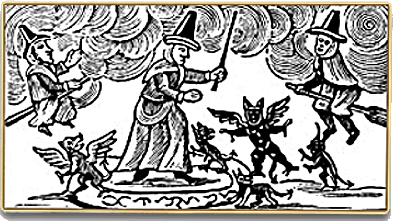
I recently revisited Ruth St. Leger-Gordon’s book ‘The Witchcraft and Folklore of Dartmoor’ and was reading the chapter on Magic Circles, pp. 146 – 152. In this chapter she makes mention of raising energy to build up ‘cones of power’ which struck a chord with me. Earlier in the week I was watching a documentary about the origins of Wicca which told how Gerald Gardner, known as the ‘father of Wicca’, held ceremonies involving ‘cones of power’. This was during the time of the Second World War and their purpose was to stop Hitler crossing the English Channel. Coincidentally, St. Ledger-Gordon relates how during the 1960s a group known as the Aetherius Society visited Dartmoor in order to conduct raising energy ceremonies in the hope that the ‘cones of power’ would stop the atomic bomb testing that was taking place, p.147. Unlike Gardner’s efforts of halting Hitler in his tracks this one never worked as we all know today.
Anyway, having read the chapter I realised that this was an aspect of Dartmoor witchcraft is missing from this website, so using much of her information here is the story. There can be no question that to the prehistoric dwellers of Dartmoor a circle was a potent and revered symbol. The numerous stone circles that dot the moorland hillsides will bare ample witness to this whilst demonstrating the effort placed in constructing such religious monuments. Exactly what significance the circle was to these folk we shall never know but one thing is for sure that this belief filtered down to later pagan societies. The ancient stone circles became adopted meeting places for occult ceremonies that were conducted by covens of witches. To this day pay a visit to the Ringastan stone circle after any important date in the pagan calendar and you will find the remains of a fire, presumably used in some ritual. On Dartmoor it is alleged that in recent years several ‘magical circles’ have been made from the carcasses of ritually slaughtered sheep and ponies. Such instances have been put down to the work of Satanists and many Wiccan followers have been quick to distance themselves from such actions.
The use of the ‘magic circle’ was also used away from the stone circles by simply marking out the shape on some convenient surface. The idea was to create an invisible boundary which was designed to contain within itself whatever spell or curse was required. Whoever created the circle would stand outside it thus ensuring whatever ‘power’ had been conjured up could not cause them harm. However there are also those who will say the opposite is true, namely that the witch has to stand inside the circle for protection and all the hocus pocus is concentrated outside it?
To demonstrate how this worked, St. Leger Gordon recounts the story of a reputed witch that lived on North Dartmoor. This woman for some time had taken umbrage with a local girl who used to buy her milk from the witch’s neighbour instead of herself. Eventually the old woman became so irritated by this that she drew a ‘magic circle’ slap bang in the middle of the only path which lead up to her neighbour’s farm. She knew all too well that the young girl was always the first person to go to the farm each day and that to get there she must walk through the ‘magic circle’. Heaven knows what curse was placed inside the circle but it would be fair guess to say it didn’t have a pleasant outcome. But by a twist of fate the daughter of the witch who was in service at Okehampton decided to pay her mother an early morning call on her day off. Unknowingly she inadvertently walked through the ‘magic circle’ thus bringing it’s curse upon herself. Shortly after this fateful day the daughter contracted some mysterious illness which eventually led to her death, p.148,

Another instance of the ‘magic circle’s’ power which Leger-Gordon relates is that of two men, probably tin miners who frequented the Warren House Inn. One night, probably in their ‘cups’, they had a serious quarrel and one threatened the other with completing his life-circle. No more was said on that occasion but a few nights later the one man managed to secretly draw a chalk circle on the floor whilst he was standing at the bar. Again, a few days later the poor victim fell ill with a sudden malignant disease which eventually ended in his death, p.150.
There was another case where a farm labourer had managed to get on the wrong side of a local witch for whatever reason. She took slight and drew her ‘magic circle’ at the bottom of a stile which the man used daily. However, in this case somebody spotted the witch drawing her circle and warned the labourer of what he might be facing. The following day he took his usual route to the farm in the company of an old hen. Upon reaching the fated stile he tossed the bird over and as planned it landed in the ‘magic circle’ and in the blink of an eye the bird dropped stone cold dead, p.150.
There is also mention of the ‘magic circle’s’ power against animals and the instance of an adder being completely confined within a circle. Although not a drawn circle I have seen similar with an adder that could not escape from Scorhill stone circle no matter how hard and in what direction he tried – this was just as well because I hate the bloody things.

St. Leger-Gordon, R. 1972. The Witchcraft and Folklore of Dartmoor. Wakefield: EP Publishing Ltd
 Legendary Dartmoor The many aspects past and present of Dartmoor
Legendary Dartmoor The many aspects past and present of Dartmoor
